Maintenance and Care of Electrical Safety PPE
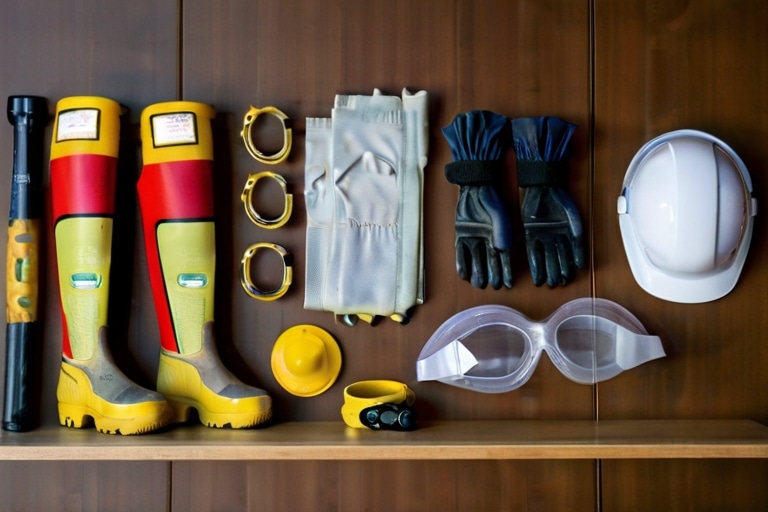
Electricity is fundamental to our modern world. Far more than just another energy source, electricity allows us to run extremely sophisticated control systems and databases that integrate every aspect of our daily lives. Electricians and other electrical workers, therefore, provide an invaluable service.
However, electricity comes with specific hazards to employees. While electrical accidents account for a relatively small proportion of workplace incidents, their severity makes their prevention a priority.
Providing employees doing electrical work with all of the necessary electrical safety personal protective equipment (PPE) is key to enhancing their occupational safety.
We also have an arc flash training video if you need materials to share with your staff.
The Purpose of Electrical Personal Protective Equipment
The Electrical Safety Foundation International (ESFI), a non-profit organization dedicated to electrical safety, highlights the benefits of appropriate electric PPE in avoiding electrical injuries.
Although administrative and engineering controls help prevent accidents, they still occur, meaning that appropriate electrical safety PPE in reliable condition is workers’ last line of defense against potential hazards.
Electrical safety PPE generally safeguards individual electricians, but some protect against other hazards that can affect everyone in the workplace.
Common Electrical Hazards in the Workplace
Understanding the common electrical hazards that workers encounter is a great help for electrical PPE selection. Use a PPE hazard assessment to identify potential risks in the work environment and the right personal protective equipment to avoid injuries and deaths.
Electrical Shock
Any equipment carrying electricity above 50V DC or AC is capable of delivering a serious electric shock to workers. The jolt of energy delivered to all of their organs causes damage. The higher the voltage, the worse the shock damage is.
High voltage inflicts severe burns and results in electrical fatalities. According to the Electrical Safety Foundation International, during the decade from 2011 to 2020, 39% of fatal electric injuries were due to contact with overhead power lines.
Many of the individuals killed in these incidents were not performing electric work; the construction industry often has workers on open-air job sites carrying items such as metal ladders. Should these come in contact with overhead electrical equipment, the result is severe burns or electrocution.
Discharges from electrical equipment that touch something dry and flammable, such as wood or clothing, result in electric fires. Exposure to direct flame for a long period causes extremely painful burns that result in disfiguring scarring and potentially permanent dysfunction.
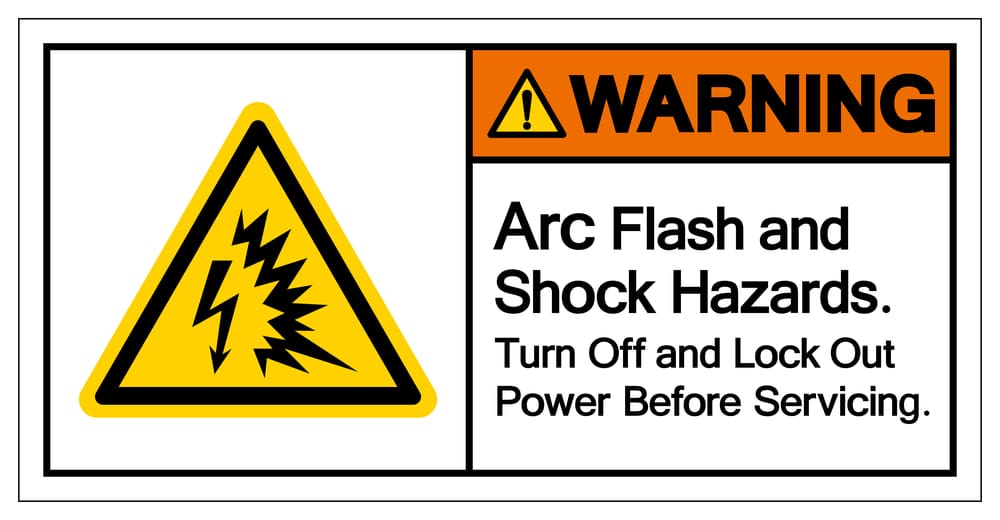
Arc Flash Hazards
Despite a reduction in number due to safety education initiatives, the incidence of arc flash accidents is still high, causing around 400 deaths every year. A breakdown between one electrical conductor and another in a high-voltage gap results in electrical energy discharging as electric arcs.
An arc flash incident occurs almost instantly, generating intensely bright light that permanently damages vision, noise high enough to cause permanent hearing loss and immense heat, as much as 35,000 degrees Fahrenheit, which causes severe burns and sets ordinary clothing alight.
The arc flash boundary is the limit within which workers would sustain second-degree burns without electric PPE; it is defined as the point where 1.2 calories of energy are delivered per square centimeter (cm2) of skin for 0.1 seconds. Arc flash risk assessments use this to calculate the PPE required.
Arc flash hazards also create an arc blast: a burst of intense pressure that flings out tiny droplets of copper and aluminum from molten electrical equipment at speeds of up to 700 miles per hour, driving them into any unprotected employees.
Falling Or Flying Objects
Electrically-powered machinery can result in other hazards to workers in the vicinity. Rotating equipment such as lathes or drive shafts catching spanners or other tools results in flying objects that strike people nearby with great force.
Electricians in overhead hoists, installing or repairing electrical equipment such as power lines, may accidentally drop objects onto personnel on the ground.
What PPE Is Needed for Electrical Safety?
Electrical personal protective equipment (PPE) requirements vary between various industries, depending on which electrical hazards are most common in a particular workplace.
Occupational safety and health officers should also consider uncommon hazards that can result in electric fatalities when making electric PPE selections.
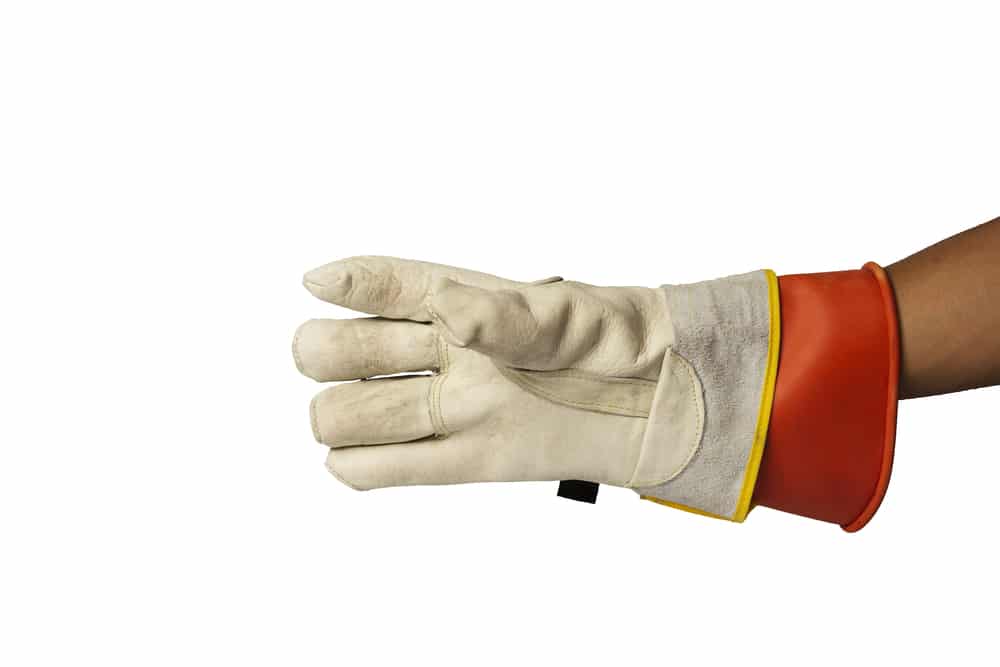
Rubber Insulating Gloves
Rubber gloves that extend up workers’ wrists, providing hand and limb protection, are essential when working with any electric equipment. They function as shock-protective PPE, preventing current from flowing through electricians’ hands and delivering electric shock.
Leather Protectors
Rubber insulating gloves, while effective at preventing the flow of current, are easily damaged by rough work surfaces. Workers should always wear leather protectors that protect the rubber gloves against being cut or torn.
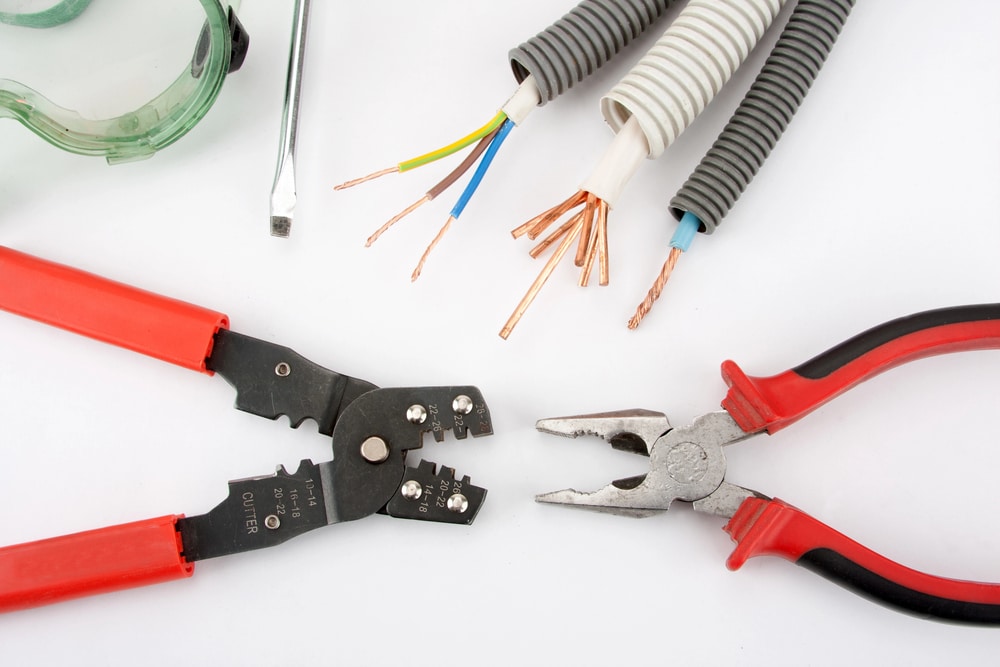
Insulated Tools
Insulated tools such as screwdrivers, pliers, wire strippers, and the like have rubberized handles that add to the protection that insulated gloves provide.
Insulated Ladders
Electricians and construction industry personnel working on high-voltage systems at height must use insulated ladders or scaffolding to create a safe working platform.
People working in the construction industry would do well to use such ladders at any time, considering the shock hazards associated with contacting overhead power lines with tall pieces of metal.
Insulating Blankets
Insulating blankets protect workers performing maintenance on electrical machinery against the electrical hazard posed by contact with energized components.
Insulating Mats
A discontinuous or absent path to the ground results in an electrical fault. Non-conductive mats protect workers from serious injuries in such scenarios by preventing the electric current from traveling through their body.
Highly portable, insulating mats find particular use in the automotive, mining, and fossil fuel industries.
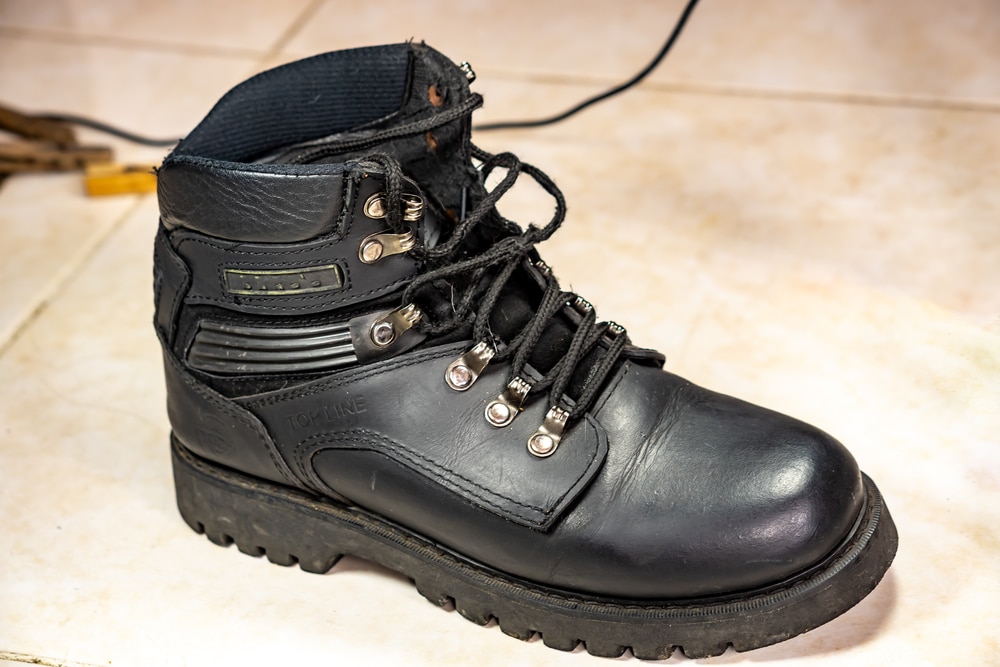
Safety Shoes
Workers must wear EH-rated leather safety shoes with non-conductive soles to protect against electrical hazards such as current flowing through their bodies.
Safety shoes must be free of oil or grease that could pose a fire hazard.
Safety Glasses
Smoked safety glasses protect workers’ eyes against bright light from electrical hazards such as arc flash incidents. They may be worn on their own; if face protection is also used, it goes over the safety glasses.
Face Shield
A face shield offers protection to the wearer’s face, preventing sparks or an arc flash from burning facial skin. Facial protection is essential when working with high voltage; a face shield must have an appropriate rating (in cal/cm2) for the arc flash incident energy.
Hearing Protection
Employees working on high-voltage electrical equipment capable of generating an arc flash must wear in-ear hearing protection to safeguard against the extremely loud noise generated by the incident energy.
Hard Hats
Hard hats are standard personal protective equipment (PPE) in many industries for good reason: any hard or fast-moving object that contacts workers’ heads can cause serious injuries to their brain, ranging from concussion and convulsions to death.
They also protect against electrical shock injuries and burns to workers’ heads. This is an item of electrical PPE that is best worn at all times.
Flame-Resistant Clothing
Protective clothing for personnel doing electric work must not kindle easily. Flame-resistant clothing protects workers from thermal hazards by preventing a minor spark from becoming a severe burn injury.
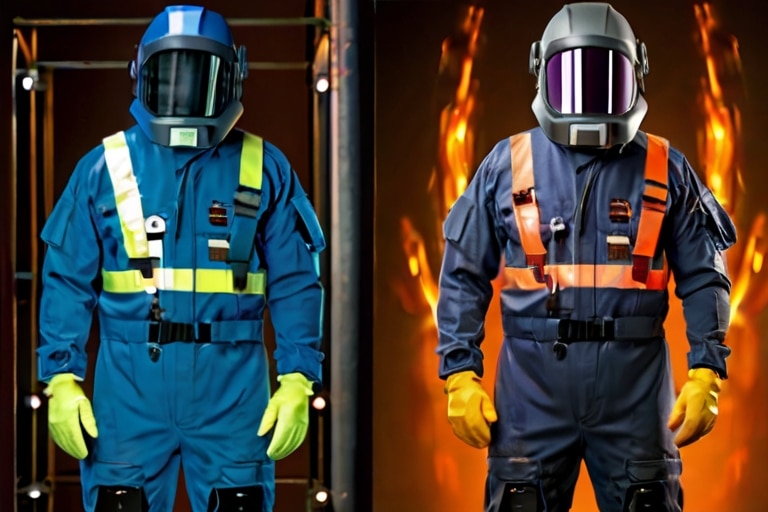
Arc Flash Suits
Electrical safety equipment for employees working on high-voltage electrical equipment that could cause an arc flash must include arc-rated clothing. Arc flash suits offer torso and limb protection against the heat generated by such incidents and against the debris they fling out.
Voltage Detectors
Voltage detectors are not strictly personal protective equipment. Nevertheless, they are critical to ensuring electrical safety, as they allow workers to detect whether de-energizing procedures have shut off the flow of current to the work area or not.
Flowing current poses electric hazards; potential risks are reduced by alerting employees to these dangers.
The Appropriate Electrical PPE for Particular Workplace Hazards
The electrical protective equipment required for workplace hazards helps to safeguard against electric shock, arc flash, and electric fires. Specific challenges often occur when working on the electrical systems of older buildings.
Multiple types of electrical PPE provide optimal protection against electrical hazards.
The Electrical PPE Required for Electric Shock Hazards and Electrical Fires
Electrical safety equipment to protect against shock hazards includes insulated gloves, insulated tools, insulated blankets and mats, and safety shoes, all of which help to prevent electric current from flowing through workers’ bodies and causing shock injuries.
Personal protective equipment against electric shock hazards must include flame-resistant clothing. Clothes that do not kindle when exposed to electric current help ensure electrical safety by preventing severe burn injuries and electrical fatalities.
The Electrical PPE Requirements for Arc Flash Hazards
The National Fire Protection Association (NFPA) 70E standard lays down obligatory personal protective equipment when employees perform electric work that could create an arc flash.
Occupational health and safety officers must perform an arc flash risk assessment to determine the potential incident energy to choose the necessary protection if an arc flash occurs.
Four categories exist: category 1 requires that electrical workers wear arc-rated, fire-resistant PPE with a minimum rating of 4 cal/cm2 for the lowest energy arc flash scenarios.
This PPE includes a coverall or long-sleeved shirt and pants, a hard hat incorporating arc-rated face protection, hearing protection (ear canal inserts), safety glasses, rubber-insulating gloves under leather protectors, and leather footwear.
Category 2 includes all the items in category 1, as well as an arc-rated balaclava and jacket. All of the equipment must be arc-rated to at least 8 cal/cm2.
Category 3 covers any areas with energy levels up to 25 cal/cm2. It includes all of the items worn for category 1, plus the arc-rated jacket, pants, and hood of an arc-flash suit. Workers should also wear cotton undergarments.
Category 4 is for the most extreme incident energy release; while the equipment worn is the same as in category 3, in this case, it must be arc-rated to 40 cal/cm2.
The Electrical PPE Required to Protect Against Falling Or Flying Objects
All employees doing electric work, construction, or any other activities that place them near moving machinery or persons doing overhead activities on ladders or scaffolding must wear hard hats.

What Are the Maintenance Requirements for PPE?
If personal protective equipment is to continue ensuring employees’ electrical safety, correct maintenance, proper inspection, and testing are essential.
Correct maintenance of electrical PPE includes proper storage that prevents mechanical or chemical damage to it. Store and label electric personal protective equipment for quick access when it is required.
What Are the Proper Procedures for Care and Maintenance of PPE?
Proper storage of electrical PPE involves keeping items in cool, dry places that protect them against excessive heat and humidity. Guard items such as safety glasses and face shields against abrasion by dust. Protect perishable rubber items such as insulated gloves against direct sunlight.
Protect electrical safety equipment against contamination with chemicals that could degrade them, render them flammable, or both. Petroleum-based lubricants, hand lotion, chlorine bleach, hydrogen peroxide, fabric softeners, laundry starch, baby powder, and ozone must be avoided.
Discard any items contaminated with such chemicals and replace them. Discard and replace any items of electrical PPE that have lost integrity: cracked face shields, torn insulated gloves, punctured arc-rated garments, safety shoes with holes, any items with embedded foreign objects, and so on.
Proper inspection must be done before the first use of any item of electrical safety PPE and at regular intervals: most pieces of electrical PPE should be inspected before every use. Follow proper testing procedures to ensure that any damage or contamination is identified before workers use the PPE.
Why the Maintenance of Electrical Safety PPE Is Essential
Given the ubiquity of electric equipment in the modern world, employees in many industries are exposed to electric hazards. Given the severity of electric injuries, correct storage and inspection of personal protective equipment (PPE) is essential to keep workers safe.
Electrical safety procedures help to reduce electrical hazards, but PPE will always be essential to avert electrical injuries and fatalities when accidents occur. Maintain electrical PPE to ensure its effectiveness and ensure that employees are trained on how to use it properly.
Around 4000 to 5000 electric injuries occur every year nationwide, of which some 10 percent are deadly. Correct maintenance and use of PPE reduces the burden of electric hazards on workers, their families, and employers.
